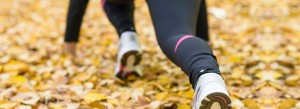Tips On Exercising Outdoors During Winter
 Winter is here, and cold weather can discourage even the most dedicated exercisers. So for those of you who might need some tips on exercising in cold weather… here you go!
Winter is here, and cold weather can discourage even the most dedicated exercisers. So for those of you who might need some tips on exercising in cold weather… here you go!
#1 Warm Up
Take 10 minutes and do some low level aerobic exercises and stretches indoors to help your body start to warm up.
#2 Dress in Layers
Many folks make the mistake of dressing too warmly for exercising in cold weather. When you exercise, you generates a significant amount of heat, and once your sweat starts to dry, you can get chilled. So to avoid this situation, dress in layers.
Make sure the first layer is made out of a synthetic material, which will draw your sweat away from your body. Next, add a layer of fleece or wool for insulation, and top this off with a waterproof outer layer that will keep you dry if it rains or snows.
#3 Protect Your Hands & Head
In cold weather, blood flow is concentrated on your body’s core and a substantial amount of body heat is lost from uncovered heads and hands; so wearing a hat, such as lightweight fleece cap, and gloves will help your body retain heat.
Wear your gloves, and hats before you go out side and become cold… you can remove them as you begin to work out and begin to sweat.
#4 Choose Appropriate Gear
This time of year it is dark in the mornings and starts getting dark in the late afternoon, so when exercises outside, always wear reflective clothing. Find out what the weather conditions will be like during the time you’re planning to be outdoors and factor in how long you plan to be outside, and what activity you will be doing so you can dress accordingly.
#6 Use Sunscreen
You can get sunburned all year round — even more so if you’re exercising in the snow or at high altitudes. Wear a sunscreen that blocks both UVA and UVB rays and don’t forget to wear sunglasses to protect your eyes.
#7 Stay Hydrated
You need to stay hydrated when exercising in cold weather just as you do when exercising in warm weather. Drink plenty of fluids before you head outside, and be sure to bring some along with you.
If you suffer from Seasonal Affective Disorder (SAD), getting outside and exercising during the day will help alleviate your symptoms.
Contact our Physiotherapists if you would like some suggestions on great warm-up stretches that are activity specific.


Leave a Reply
Want to join the discussion?Feel free to contribute!